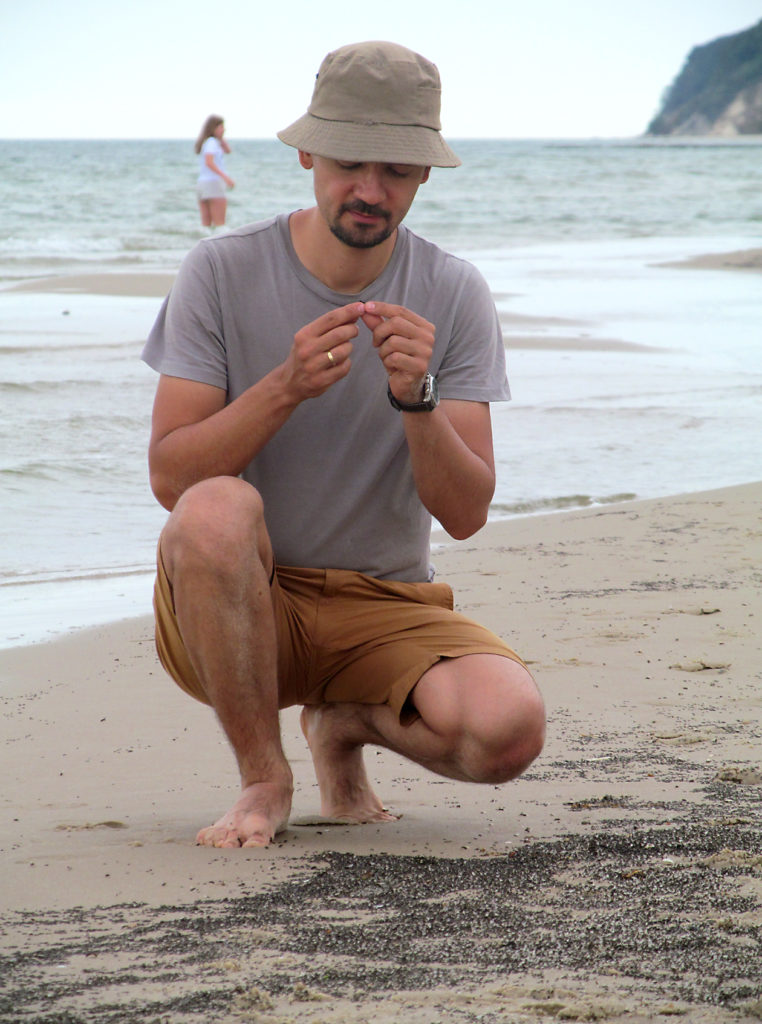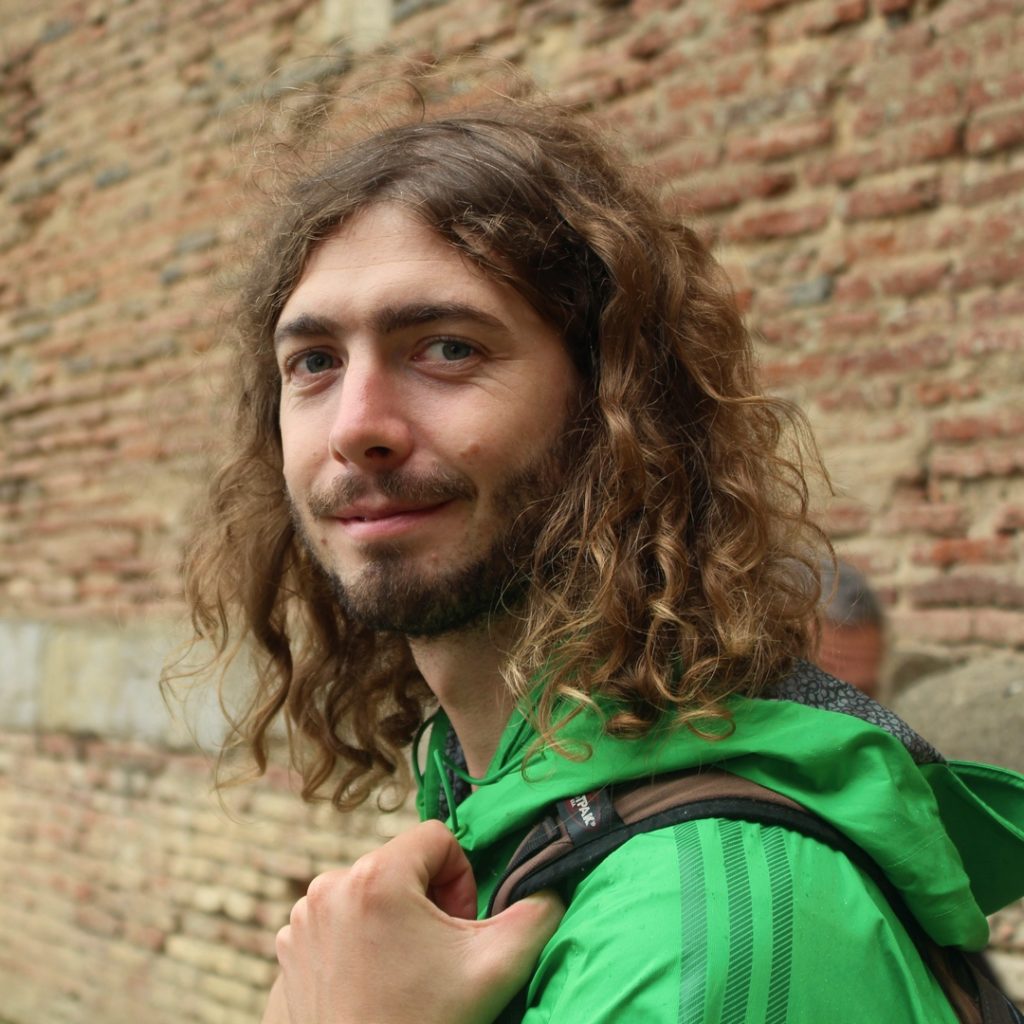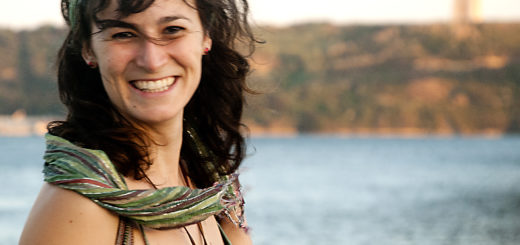Interview with Tomasz Włodarczyk

Tomasz Włodarczyk is a researcher at the University of Bialystok in Poland, where he studies the interaction between slave-maker ants and their host species. He enjoys working with ants due to the possibilities to diversify by combining laboratory and fieldwork, and he regularly conducts courses for students. Here, we talk about his model species Formica sanguinea, which other ant species he keeps in the lab, and why he likes slave-making ants.
An Interview compiled by Felix Oberhauser

MNB: Can you tell us about your educational background? You have finished your PhD, how did you come to this position?
TW: I was born in Szczecin and studied Biology at the University of Warsaw. After finishing my studies, I moved to Bialystok for my PhD, where I worked on ants, although nobody else there was studying them in this university. This gave me a lot of independence that constituted a very attractive position and I decided to seize it.
MNB: When did you finish your PhD?
TW: Two years ago, under supervision of Professor Wojciech Czechowski.
MNB: And now you are working as a post-doc?
TW: Yes, but I did not change university and continued my research on ants.
MNB: Could you tell us about your research?
TW: Currently, I try to answer some questions which arose during my studies as a PhD student. I found that Formica sanguinea ants use a very special chemical strategy to deal with their host species. I am now investigating whether this strategy can be flexible and adjusted to the proportion of F. fusca workers in the colony.

MNB: Your model system is F. fusca and F. sanguinea. Can you tell us a little bit about this interesting coexistence?
TW: Formica sanguinea is a facultative slave-making species. We know that obligate slave-making species often use chemicals to interact with their slaves, mostly as chemical mimicry. I found that F.
MNB: How did you end up studying ants?
TW: My first experience and my interest in ants arose when I played an Amiga game called SimAnt with my friend. I became really interested in the workings of ant colonies thanks to this game. Later, I started to observe ants in the field. I was fortunate enough to live near a nature reserve, where plenty of ants existed. One of my schoolmates spotted ant nests there and told me about it. This gave me many possibilities for observations in the wild. I remember that the first two species I observed as a young ant
MNB: Interesting story, especially with a computer game at the start of a career.
TW: Yes, but as far as I know I am not the only one who got into ants this way. One colleague of mine also entered this way.
MNB: How do you feel about fieldwork?
TW: I really like fieldwork, but it is very time-consuming. Now I try to do more things in the laboratory applying laboratory conditions, as it allows us to control many factors, which is often very hard to do in the field. Last year I managed to conduct some aggressiveness studies in the field. It was quite hard to confine ants to some area around the nest entrance, but I managed to do it and the results are quite rewarding. I will definitely do more fieldwork in the future.
MNB: How do you feel about identifying ants using a key?
TW: It demands some initial experience, but it becomes easier after that. It is an inevitable part of field biology. Maybe in the future we will have some advanced automatic recognition tools using machine learning, but for now it is a vital part, especially in ants which are often morphologically very similar.
However, if you have some field experience and knowledge about the habits of species, you can integrate this information about morphology and ecology to efficiently identify species.
MNB: What do your usual laboratory experiments look like?
TW: I have colonies, some of which were kept in the laboratory for more than 10 years. Usually, I first conduct some pilot studies which are followed by more elaborate setups. This is the most time-consuming part. I now have about 40 ant colonies, so keeping them alive takes quite a long time. I often conduct aggression tests between colonies or create mixed colonies. I also extract cuticular hydrocarbons (CHCs) from ants.
MNB: So you keep F. sanguinea and F. fusca colonies?
TW: Yes, and I also have one Polyergus rufenscens and three Formica cunicularia.
MNB: Are they difficult to keep?
TW: No. not very. But you have to be very careful to provide them with proper nutrition and photoperiods. So maybe it is less hard than it is

MNB: What was the biggest obstacle you had to overcome in ant research?
TW: Hard question. There were many.
MNB: What’s the first one which comes to your mind?
TW: I intended to study
MNB: Do you have a favourite myrmecological phenomenon?
TW: Slave-making! This kind of parasitism is restricted to ants and a very unusual form of parasitism. It is interesting how it evolved, and we can compare many species which differ in the stage of progress towards slave-making.
MNB: What do you enjoy most in ant research?
TW: The versatility of ants as model organism. They can be studied from many different viewpoints. In behavioural studies we can observe their division of labour and high biological organization. The behaviour of individuals is also very interesting, as it interacts with the colony, but still the individuals differ and can behave in many different ways. Often, we cannot predict those behaviours. So, such ‘simple’ animals – compared to many vertebrates – can generate a large variety of behaviour.
MNB: If you had not become a myrmecologist, what else would you have liked to become?
TW: Maybe a teacher or computer scientist. Or a train driver. I was dreaming about this during my childhood.
MNB: What is the one thing you wish everyone knew about ants?
TW: Everybody should know that ants are not just robots which perform an innate algorithm, but that they are living animals which are sensitive to external cues and behave in a similar manner to vertebrates. They form very complex societies with division of labour. An ant colony does not consist of identical individuals, but rather of ants showing highly diverse behaviours.
MNB: Do you have any suggestion for people starting in myrmecology?
TW: They should not neglect the importance of field experience and bear in mind that the phenomena which we observe in the lab do not always translate easily in natural conditions. So people who want to start studying ants should get some initial training in the field, try some easy manipulations to see how colonies react. I also recommend some older books as references which often include detailed descriptions of ant behaviour and are a good start to gain basic knowledge and can be very inspiring.

MNB: What question are you asked most often when people hear you work with ants?
TW: How many species of ants live in Poland?
MNB: And how many are there?
TW: About one hundred species. Of course, it changes over time, but it is slightly more than 100.
MNB: Have you profited more from attending conferences with narrower or with broader scope?
TW: Both are necessary for researches to grow their knowledge. I cannot say which one I like more. I think both are equally important.
MNB: What is most relevant to you at a conference: attending talks, giving a talk, meeting senior scientists, meeting other students?
TW: Meeting scientists is the most important part. It is the best option to exchange ideas, get to know what others are doing and how they are doing it. This way, you can also compare your research with others to see what you are doing wrong. This can lead to great solutions and innovations.
MNB: What is your personal trick to get over periods of low motivation?
TW: Just wait. If you face some difficulties during your studies, you realise that this is also a part of science. With increasing experience, you get more resistant to such periods.
MNB: Reading or writing?
TW: Reading.
MNB: Writing or reviewing?
TW: Writing.
MNB: Watching sports or doing sports?
TW: Doing sports.
MNB: Listening music or playing an instrument?
TW: Unfortunately, I cannot play an instrument, so listening.
MNB: Do you enjoy the evening or the morning?
TW: Evening.
MNB: Tea or coffee?
TW: I do not drink coffee, so tea.
MNB: Habit or change, what do you prefer?
TW: Change.
MNB: Cooking yourself or going out to have dinner?
TW: Going out to have dinner.

MNB: Aspirator or forceps?
TW: Forceps.
MNB: Nest densities or pitfall traps, what do you prefer?
TW: Nest densities.
MNB: Field work or lab?
TW: For now, the lab, I need some rest from field work at the moment.
MNB: Pin or ethanol?
TW: Ethanol.
MNB: Paper printed out or reading on the laptop?
TW: Laptop.
MNB: Windows, OS, or Linux?
TW: Windows.
MNB: Mouse or touchpad?
TW: Mouse.
MNB: Social parasite or host?
TW: Parasite.

MNB: Journals financed by the author (open access) or by the reader (subscription based).
TW: By author.
MNB: Kin selection or group selection?
TW: Kin selection.
MNB: Do you prefer monodomy or supercoloniality?
TW: Supercoloniality.
MNB: Your favourite ant?
TW: Formica sanguinea
MNB: Thank you again so much for this great interview.






Recent Comments